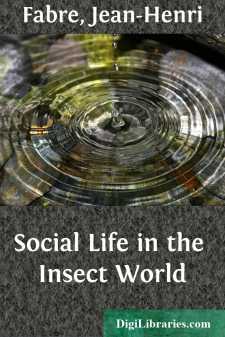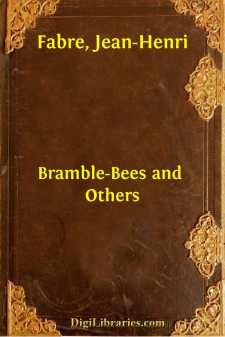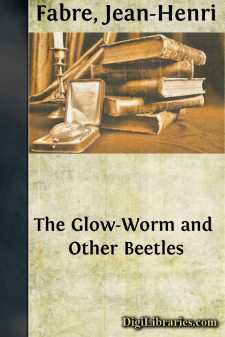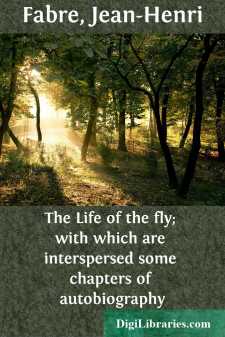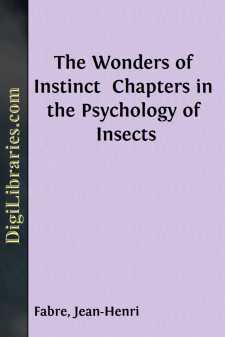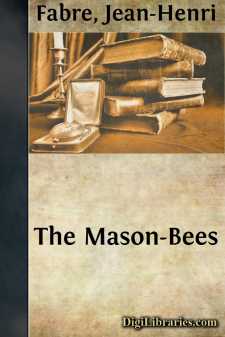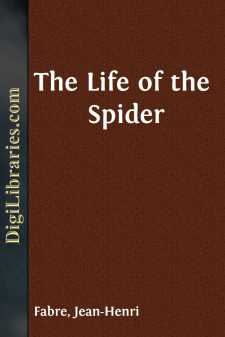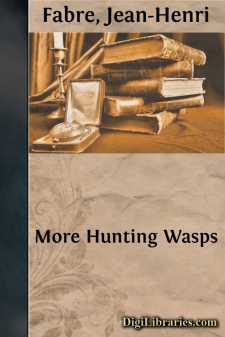Categories
- Antiques & Collectibles 13
- Architecture 36
- Art 48
- Bibles 22
- Biography & Autobiography 813
- Body, Mind & Spirit 142
- Business & Economics 28
- Children's Books 15
- Children's Fiction 12
- Computers 4
- Cooking 94
- Crafts & Hobbies 4
- Drama 346
- Education 46
- Family & Relationships 57
- Fiction 11828
- Games 19
- Gardening 17
- Health & Fitness 34
- History 1377
- House & Home 1
- Humor 147
- Juvenile Fiction 1873
- Juvenile Nonfiction 202
- Language Arts & Disciplines 88
- Law 16
- Literary Collections 686
- Literary Criticism 179
- Mathematics 13
- Medical 41
- Music 40
- Nature 179
- Non-Classifiable 1768
- Performing Arts 7
- Periodicals 1453
- Philosophy 64
- Photography 2
- Poetry 896
- Political Science 203
- Psychology 42
- Reference 154
- Religion 513
- Science 126
- Self-Help 84
- Social Science 81
- Sports & Recreation 34
- Study Aids 3
- Technology & Engineering 59
- Transportation 23
- Travel 463
- True Crime 29
Jean-Henri Fabre
Jean-Henri Fabre (1823-1915) was a French naturalist, entomologist, and author known for his detailed observations and writings on the behavior of insects. His most famous work, "Souvenirs Entomologiques," consists of a series of volumes that combine scientific observations with engaging and accessible storytelling. Fabre's contributions significantly advanced the field of entomology and his vivid descriptions and insights continue to inspire both scientists and nature enthusiasts.
Author's Books:
Sort by:
by:
Jean-Henri Fabre
CHAPTER I THE FABLE OF THE CIGALE AND THE ANT Fame is the daughter of Legend. In the world of creatures, as in the world of men, the story precedes and outlives history. There are many instances of the fact that if an insect attract our attention for this reason or that, it is given a place in those legends of the people whose last care is truth. For example, who is there that does not, at least by...
more...
by:
Jean-Henri Fabre
CHAPTER 1. BRAMBLE-DWELLERS. The peasant, as he trims his hedge, whose riotous tangle threatens to encroach upon the road, cuts the trailing stems of the bramble a foot or two from the ground and leaves the root-stock, which soon dries up. These bramble-stumps, sheltered and protected by the thorny brushwood, are in great demand among a host of Hymenoptera who have families to settle. The stump, when...
more...
by:
Jean-Henri Fabre
CHAPTER ITHE GLOW-WORM Few insects in our climes vie in popular fame with the Glow-worm, that curious little animal which, to celebrate the little joys of life, kindles a beacon at its tail-end. Who does not know it, at least by name? Who has not seen it roam amid the grass, like a spark fallen from the moon at its full? The Greeks of old called it [Greek: lampouris], meaning, the bright-tailed....
more...
by:
Jean-Henri Fabre
CHAPTER I. THE HARMAS This is what I wished for, hoc erat in votis: a bit of land, oh, not so very large, but fenced in, to avoid the drawbacks of a public way; an abandoned, barren, sun scorched bit of land, favored by thistles and by wasps and bees. Here, without fear of being troubled by the passersby, I could consult the Ammophila and the Sphex [two digger or hunting wasps] and engage in that...
more...
by:
Jean-Henri Fabre
CHAPTER 1. THE HARMAS. This is what I wished for, hoc erat in votis: a bit of land, oh, not so very large, but fenced in, to avoid the drawbacks of a public way; an abandoned, barren, sun-scorched bit of land, favoured by thistles and by Wasps and Bees. Here, without fear of being troubled by the passers-by, I could consult the Ammophila and the Sphex (two species of Digger-or...
more...
by:
Jean-Henri Fabre
CHAPTER 1. THE MASON-BEES. Reaumur (Rene Antoine Ferchault de Reaumur (1683-1757), inventor of the Reaumur thermometer and author of "Memoires pour servir a l'histoire naturelle des insectes."—Translator's Note.) devoted one of his papers to the story of the Chalicodoma of the Walls, whom he calls the Mason-bee. I propose to go on with the story, to complete it and especially to...
more...
by:
Jean-Henri Fabre
CHAPTER I: THE BLACK-BELLIED TARANTULA The Spider has a bad name: to most of us, she represents an odious, noxious animal, which every one hastens to crush under foot. Against this summary verdict the observer sets the beast’s industry, its talent as a weaver, its wiliness in the chase, its tragic nuptials and other characteristics of great interest. Yes, the Spider is well worth studying, apart...
more...
by:
Jean-Henri Fabre
CHAPTER 1. THE POMPILI. (This essay should be read in conjunction with that on the Black-bellied Tarantula. Cf. "The Life of the Spider," by J. Henri Fabre, translated by Alexander Teixeira de Mattos: chapter 1.—Translator's Note.) The Ammophila's caterpillar (Cf. "The Hunting Wasps," by J. Henri Fabre, translated by Alexander Teixeira de Mattos: chapters 13 and 18 to 20;...
more...


